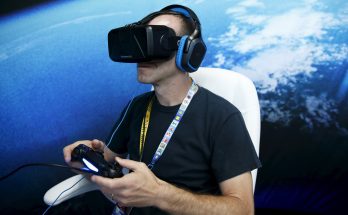The Current Landscape of Wireless VR
Wireless VR technology splits into two main categories: standalone headsets and wireless adapters for PC-based systems. Standalone headsets, like the Oculus Quest 2, provide a completely untethered experience by integrating all essential components—processor, battery, and display—right within the headset. These devices are praised for their ease of use, portability, and broad appeal, attracting both casual and avid gamers.
Meanwhile, wireless adapters, such as the HTC Vive Wireless Adapter, allow high-end VR headsets that were originally tethered to PCs to operate wirelessly. These adapters preserve the rich graphics and processing power of PC-based VR, offering users a compromise-free experience.
Overcoming Technical Hurdles
The road to perfecting wireless VR includes several technical obstacles:
- Latency and Bandwidth: To maintain a seamless and immersive experience, wireless VR must handle large data volumes at ultra-high speeds. It’s critical to keep latency under 20 milliseconds to prevent noticeable lags that can disrupt the VR experience and cause discomfort.
- Battery Life: Effective power management is vital. While current standalone VR headsets can provide several hours of play, battery life still varies greatly depending on the application’s complexity and hardware efficiency.
- Interference: Wireless signals can be disrupted by other electronic devices and physical obstructions, potentially degrading the VR experience. Ensuring strong and consistent wireless communication in various environments remains a challenge.
Enhancing the User Experience
Adopting wireless technology significantly improves the overall VR experience. It grants users greater freedom of movement, which is especially beneficial in physically interactive applications like fitness programs or exploration games. This freedom helps create a more absorbing and engaging experience by eliminating the physical reminder of cables.
Additionally, the simplicity and user-friendliness of standalone wireless systems promote more spontaneous and frequent use, potentially attracting a broader audience, including those previously put off by the complexities and spatial demands of traditional VR setups.
Innovations and Market Trends
The future of wireless VR is bright, fueled by ongoing innovations and evolving market trends:
- Advanced Compression Techniques: Developers are creating new algorithms to efficiently compress VR data, ensuring quicker transmission rates and lower latency.
- 5G and Wi-Fi 6: The introduction of 5G networks and Wi-Fi 6 is set to address many current bandwidth and interference issues with higher speeds and more robust connections.
- Battery Technology: Progress in battery design, including higher-capacity lithium-ion batteries and the potential for solid-state batteries, promises longer usage times and faster charging.
- Integration with AR and Mixed Reality: As wireless technology matures, its combination with augmented reality (AR) and mixed reality (MR) is expected to spawn novel hybrid experiences that fluidly merge real-world elements with virtual settings.
Wireless VR is redefining the standards for virtual reality interactions, providing users with unparalleled freedom and flexibility. Although some technical challenges remain, the steady pace of innovation and market developments suggest a promising future where wireless VR becomes mainstream, transforming our engagement with digital worlds. As this technology continues to develop, it opens up exciting new possibilities for deepening our immersion in virtual realms.








